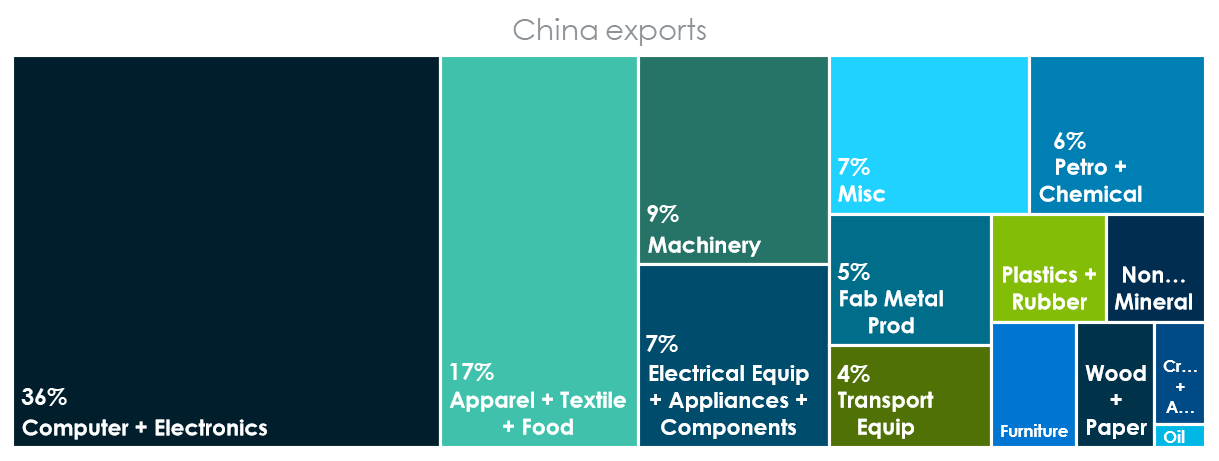Although China has been able to slow the spread of COVID-19 through strict controls and government mandates, governments and corporations around the world are concerned by the loss of lives and economic repercussions. By investigating the potential impact of a pandemic outbreak ahead of time, organizations can build contingency plans to deal with the economic fallout and its likely effect on supply chains.
Hubei Province
Modern-day Wuhan City, the capital of Hubei Province, is known as the “Optical Valley” of China because its production of optical fiber cable and related devices accounts for 25% of global market share. Hubei province generates 4.4% of China’s nominal GDP and ranks seventh by province GDP (USD 594.9 billion). Items manufactured in the province include iron and steel products, transportation equipment, chemicals, machinery, and electronics. National exports of these and other industries are represented in Figure 1; more than 40% of China’s global exports are computers, electronics, and electrical goods.

Manufacturing Disrupted
Since the end of January, government authorities in Hubei Province and other parts of China have asked firms to keep operations shut down until further notice and inspection. In compliance, non-essential manufacturers delayed restarting their plants. By the end of February, after inspections, electronics manufacturers were gradually starting to ramp up production but factory capacity has been slow to return to normal. Apple’s iPhone production has gradually resumed at manufacturing plants outside Hubei, and Foxconn is yet to resume normal work across its plants in China but has some facilities operating at partial capacity. International supply chains have been impacted as a result. Some automobile manufacturers, such as General Motors, do not expect to be affected but Nissan, for example, cites reduced vehicle production due to problems procuring components.
Growing Vulnerability
Trade implications for China were likely to be limited if the virus was confined to Hubei. Unfortunately, it has spread to other regions, so its impact on global supply chains will likely be more disruptive to international trade. COVID-19 is expected to disrupt supply chains for computers, electronics, and vehicles among industrialized nations, including China’s top export partners of the United States, Japan, Germany, and South Korea.
The second half of February saw an increase in the spread of COVID-19 in South Korea, Italy, and Iran. As countries in the Middle East and Europe confirmed more cases of coronavirus, global supply chains can become increasingly more vulnerable. Depending on how the virus propagates, its impact could cause significant global disruption to manufacturing and services.
Proactively planning for unexpected events with quantitative models can make a difference for corporations (and insurers) as compared to only reacting after the fact. Using predictive methods, AIR’s supply chain model identifies macro-level causal interdependencies that allow companies to determine potential impacts from these kinds of disruptions. With AIR’s macro-level insights, corporations or insurers can analyze individual companies or their entire portfolios for intangible aggregation risk. By using scenario modeling, organizations can develop contingency plans to mitigate the evolving threat of coronavirus on their businesses and be better prepared before the next crisis unfolds.
Read AIR’s Supply Chain thought leadership report published in collaboration with Lloyd’s




